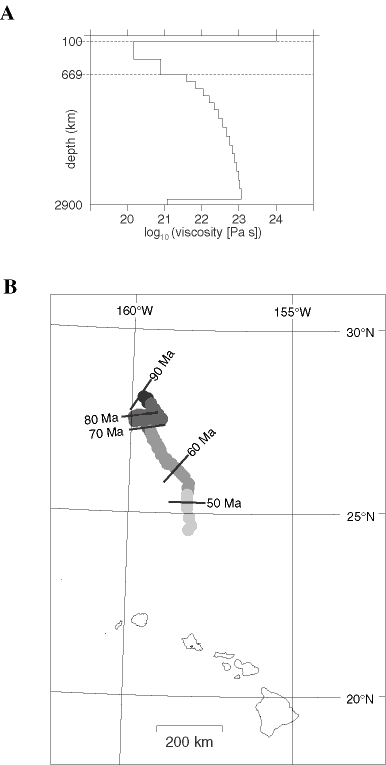
Figure 2. A. Preferred viscosity structure used to calculate hotspot motion from Steinberger and O'Connell (1998). A low-viscosity upper mantle is used to reproduce the Hawaiian-Emperor bend. A high-viscosity lower mantle is employed; otherwise the relative motions between hotspots are greater than observations. The Harvard tomographic model S12WM13 was used to infer mantle density heterogeneities. The gradual increase in viscosity was chosen to minimize disagreements with models based on postglacial rebound, which mainly constrain viscosity in the upper half of the mantle. B. The predicted motion of the Hawaiian plume between 90 and 43 Ma after Steinberger (2000). The model predicts a southward component of motion ~10 mm/yr. This results from the mantle flow at depth, which also tends to have a southward component of the same magnitude partly due to a return flow opposite to Pacific plate motion assumed in the model. The model predicts only a small relative motion between the Hawaiian and Louisville hotspots, in accordance with the age progressions observed along the two hotspot tracks. Other models with a lower viscosity in the lower mantle predict substantially higher flow speeds and substantially larger southward motion of the Hawaiian hotspot.
